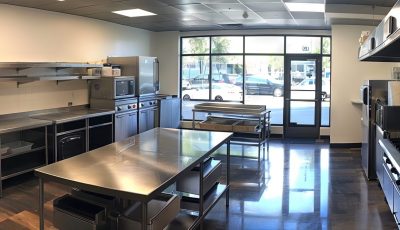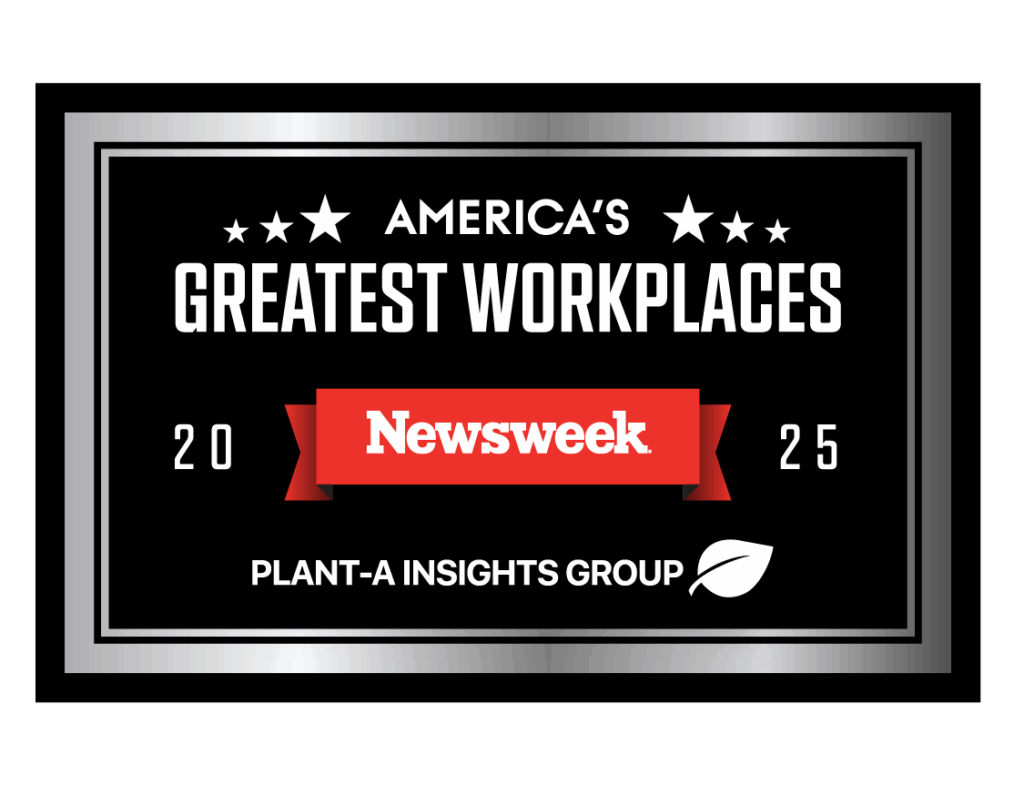Bryan Beitler, Vice President Special Projects, CoolSys
For many years, large scale refrigeration plants have used ammonia refrigeration systems, they are very efficient, good for high tonnage, and are widely accepted in the “industrial” refrigeration community as the standard for large cold storages and process refrigeration applications. Recent directions have offered other options for the end user, including low charge ammonia systems, a more “distributed” approach, eliminating central plants, need for onsite engineers, and the risk of a large discharges (however very rare). In addition, and the subject of this article, another option has surfaced using CO2 as the refrigerant, another natural refrigerant option. This article will describe the largest CO2 installation in North America, utilizing CO2 refrigerant for a pork processing facility in California.
There is nothing new about CO2 in reality, it was used as a refrigerant in the mid-19th century, reached its peak use in the 1920’s, declining when chemical CFC refrigerants were brought to market. It surrounds us, keeps our precious products frozen when used as dry ice, and has no detrimental effect on the ozone layer and insignificant effect on global warming.
In 2017, Michael Lau and his team at Yosemite Meat Co. had a vision of expanding his family owned pork processing plant into a larger state of the art facility, allowing space for business growth, improved efficiency and the ability to have future capacity available. An abandoned facility in Stockton was chosen as the location, and Michael had to determine what the best way was to refrigerate his new venture. Key decision points included: the final solution must be environmentally best in class; safety was of critical importance, utilizing a non-corrosive substance as the refrigerant; eliminate as many emergency and life safety issues as possible; ability to generate a significant amount of reclaimed heat; and whatever the choice, it must be cost effective on both first cost and operating cost. A CO2 system became the refrigerant of choice after an exhaustive study.
The plant includes approximately 110,000 square feet of refrigerated space, divided up in many different dedicated areas as a production plant dictates. Some plant statistics:
- 87 total evaporators
- 65 compressors
- 2450 compressor hp
- Five compressor rack systems
- 1398 tons of CO2 refrigeration capacity
- 5 hybrid gas coolers, allowing transcritical operation
The heart of the system consists of 5 parallel compressor rack systems, each with 13 semi hermetic compressors. Each rack is split up into three separate suction groups; one designed at -13 for freezer space and chill tunnels; one at +20 for processing spaces, cooler storage and shipping and receiving; and one at +38F for parallel compression, required during transcritical operation. Each rack operates independently from the others, and loads are dispersed between the racks so that each space has redundancy in mind.
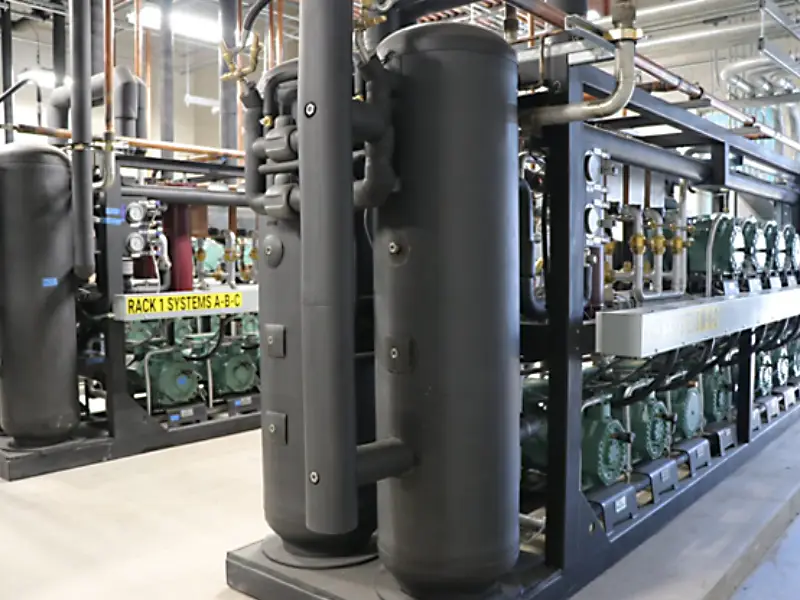
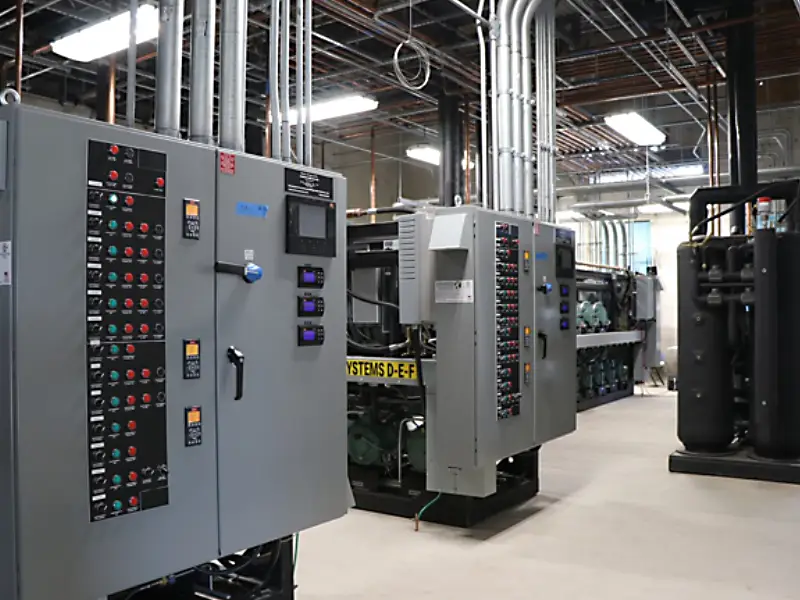
To efficiently operate a system such as this, key elements of consideration were use of electronic expansion valves for each evaporator (required in a CO2 system), distributed controls allowing plant operators visual indication of system operation features (refrigeration, defrost, alarm, cleaning, etc.), and distributed smart controls which enabled “zone like” control strategies for temperature monitoring, leak detection, defrost and refrigeration control, as well as electronic valve control. Remote defrost panels were located near the evaporator loads, minimizing wiring requirements for high and low voltage needs. Variable speed evaporator fan controls were included, following California’s Title 24 requirements for a refrigerated warehouse such as this. Controls allow the fan speed to vary during certain times, minimizing fan input kW, and saving energy. A Danfoss control system was selected as the controls of choice, allowing central oversight, but “smart” local independent controllers not requiring a host central processor.
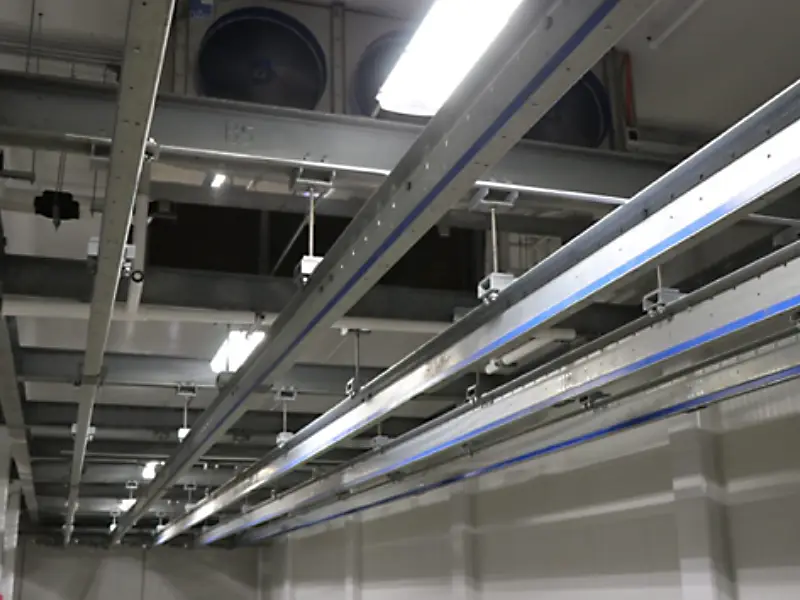
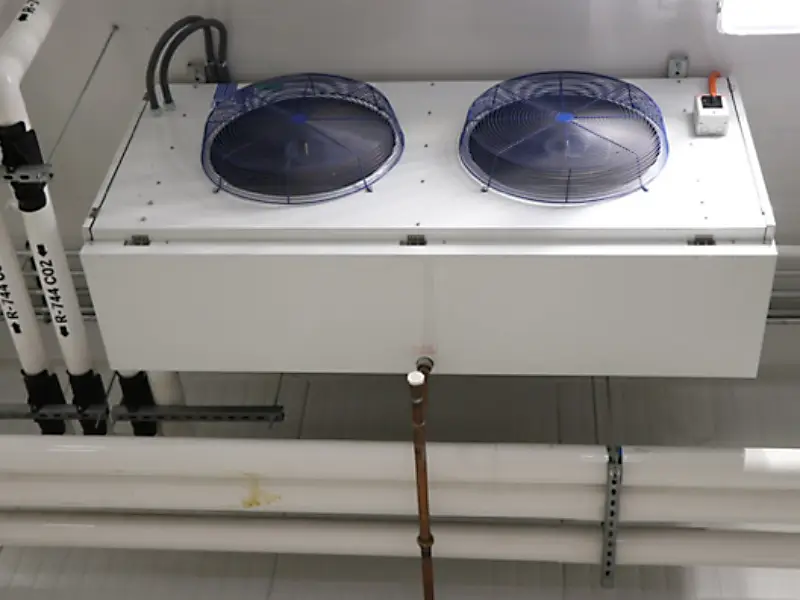

In selecting CO2 as the refrigerant of choice, this enabled the design to take in a more “commercial” approach in an “industrial” setting. All piping was copper, either type K, or new “iron copper”, where pressure considerations were taking into account in the design. Main lines are loop piped to the plant, allowing one main piping system from each rack to collect branch circuits from the refrigerated spaces. Localized isolation valves and controls allow independent localized control and access. Hot gas piping was distributed similarly, utilizing a main hot gas supply and return line serving all positive defrost evaporators on each rack. Compressors used were Bitzer semi-hermetic design, utilizing variable speed drives on lead compressors, standard components rated for higher pressure operation, most familiar to those contractors involved with CO2 systems in the grocery retail world. Just on a larger scale.
Use of hybrid gas coolers enable the system to function in transcritical mode, in a high ambient environment. The dry bulb design for the plant is 103 F, and with the addition of a wetted pad upstream of the gas cooler coils, ambient temperatures are dropped to a significantly lower level (approximately 20 degree air temperature drop), facilitating as efficient as transcritical operation as possible. When ambient temperatures are low enough, the system will automatically shift to sub-critical mode, disabling the parallel compressor function. The booster system design is built to take full advantage of every possible opportunity to run as efficiently as possible.
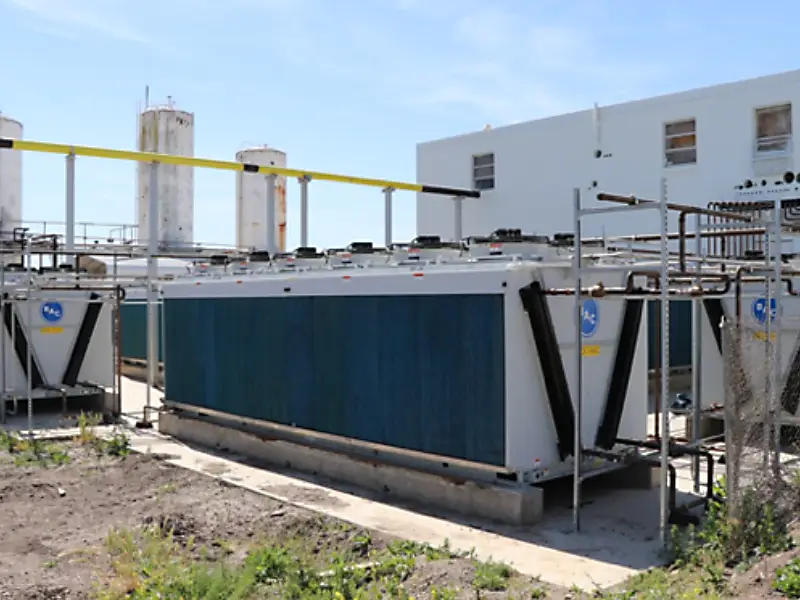
Defrosting for lower temperature evaporators is accomplished with hot gas. A four pipe system is utilized, with controls on the rack to supply gas volume to the system, and localized suction stop/hot gas solenoid/bypass check valve assemblies installed at each coil. Utilizing hot gas allows further use of the system’s waste heat, minimizing electrical resistant heat needs with alternative defrost types. In addition to use of heat for defrosting, it is also used for warming under slab glycol for heating systems, and for hot water used for wash-down. Each rack is equipped with high side plate heat exchangers for extracting the majority of heat used for the plants hot water needs.
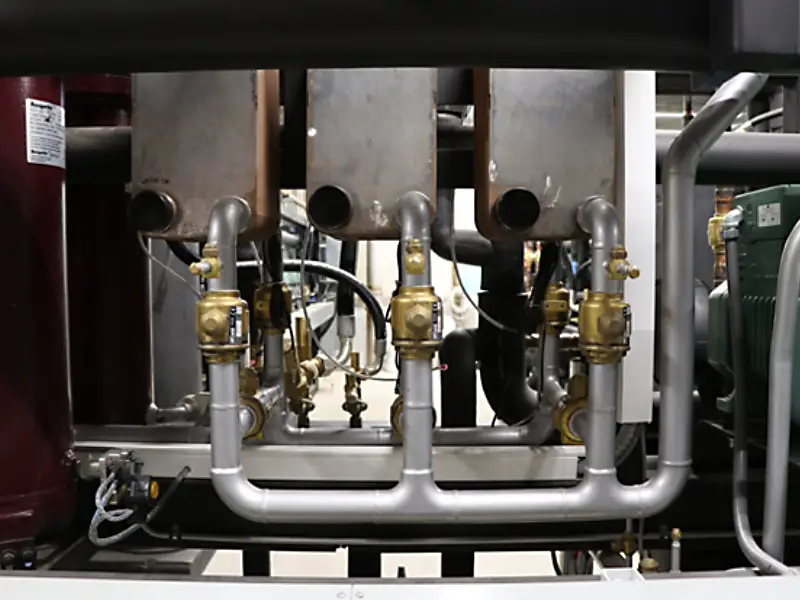
Current state of the project is that it is under start-up and commissioning at present. One of the racks serving a leased space has been in operation for 4 months, working as designed and expected. The other 4 are in operation, with testing of the plant scheduled for mid-May. As the first of its size, the hope is that we establish the benchmark for larger modular systems for industrial applications. Combining manufactured rack systems and components aligns with how the commercial world has operated for many years with packaged compressor systems and controls. Programming and controls are somewhat complex, but nothing new, simply a lot of it. Alignment of safety devices related to leak detection and alarm are essential for a processing facility such as this to insure employees have a safe environment to work in, and that code requirements are fulfilled. Eventually, the owner will have a graphics display in his office or on his pad that he can look at from a distance and know that his refrigeration system is functional, operating as planned and his products are preserved in good order.
For a North American project, this one tracks new ground, however internationally, there have been others that have proceeded this with similar layouts. It is an exciting new chapter with respect to natural refrigerant use, the possibilities are extraordinary for use of CO2 with facilities such as this. Technician training, familiarity with this newer technology and its operational attributes will be top of mind in the near future, however other industries have already adopted these techniques, and this is just an order of magnitude larger. What feels “new” really isn’t, it is re-packaged, current, environmentally responsible, fits this application well and is an exciting new direction we all will want to keep track of and embrace.

